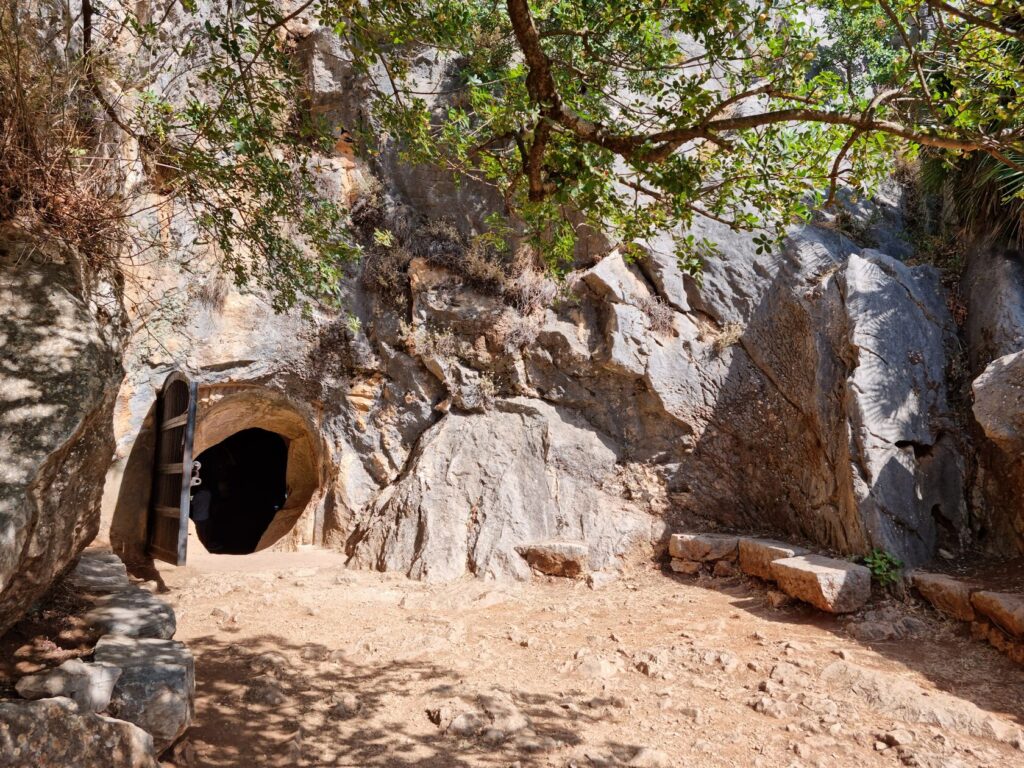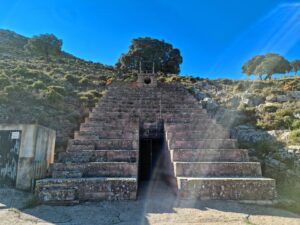Know the cave of la Pileta!
Know how and where our ancestors lived in the cave of la Pileta. Neanderthals in Spain.
03 July 2022
What is this page about
How to visit the cave of La Pileta
After visiting the cave of La Pileta, I just wanted to delete everything that I wrote about the caves of Ardales and Araña, since this cave cannot be compared with the previous two. We saw everything in it: an incredible amount of paintings from 20.000-40.000 years ago, flocks of bats, cave formalizations of all shapes and sizes and, and most important, I was able to take photos (at least no one said it was forbidden). The cost of a 1.5 hour cave tour is 10 euros per person (prices summer 2022). The tour must be booked in advance by phone (+34 677 610 500) as they do not respond to emails. There were Germans in our group, and the guide was able to tell them something in English, so I recommend this cave also for those who do not speak Spanish.
The cave is suitable for elderly people and small children (I would say starting from 5 years old). The cave is slippery because of humidity and there are many steps along the way. To get to the entrance of the cave itself, from the parking lot you need to overcome a long climb up the stairs (the most difficult part, perhaps). Tickets can be paid at the entrance before the tour.

History of La Pileta
After analyzing the rock paintings and human remains found in the La Pileta cave, scientists concluded that the cave was inhabited during four periods of the Upper Paleolithic: the Middle Solutrean, Gravettian, Middle Magdalenian and Upper Magdalenian periods, and during the Neolithic phase as well.
The chronology of the rock paintings covers several millennia, approximately 20,000 years ago (the guide also mentioned 40,000), which allows us to observe the evolution of painting technique from the oldest naturalistic images to the latest schematic ones. Among the Paleolithic animal paintings stands out a so-called pregnant mare (no photo), which is similar to painting in other caves in the south of the peninsula, such as Cueva del Moro, located in Tarifa.
The most outstanding example of paintings that you will find at the very end of the cave is a picture of a fish. Fish paintings can also be found in other caves of he region: Ardales, Las Motillas (Jerez de la Frontera) and Nerja. The paintings of a fish began to appear on the walls of the caves for a reason – fishing tackle began to be invented during that period (Solutrean). Neolithic paintings do not only represent animalistic patterns. We can also see symbols that most likely served as calendar marks on the same wall.

There are still many caves on the coast, where tours are not organized due to inaccessibility, and some of them have simply not yet been explored. If you need help in organizing routes to the caves, or anywhere else, don´t hesitate to contact me for a consultation, and I will organize an unforgettable trip for you!
Know the cave of Nerja!
Know the cave of Nerja!Know how and where our ancestors lived in the cave...
Read MoreKnow the cave of La Araña!
Know the cave of La Araña!Know how and where our ancestors lived in the...
Read MoreKnow the cave of Ardales!
Photo: PDF guide Know the cave of Ardales! How to visit the cave of...
Read More


